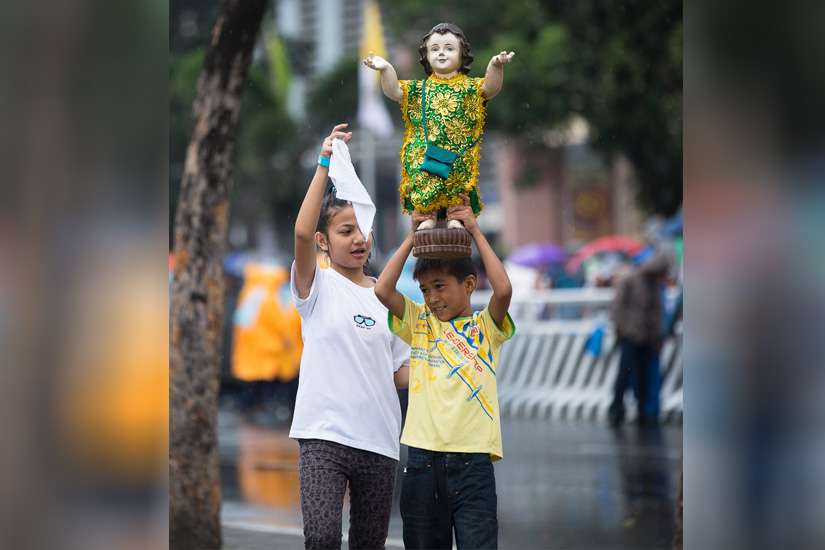Many of the more than 6 million people who walked along the closed-off roads surrounding the park Jan. 18 held Santo Nino statues of various sizes. Their goal was to get their doll-like figurines blessed by Pope Francis.
Viljon Ilocos hugged his Santo Nino, dressed in a satiny green caftan with a gold thread design.
"He is my hero," said the 22-year old from Cebu, where deep devotion to Santo Nino originated in the Philippines almost 500 years ago.
"When I was sick before, he helped me," Ilocos told Catholic News Service right after the Mass with the Pope. He explained he had typhoid fever that went undetected.
"When I was graduating, I guess from being overworked with all of the school activities, I got sick and really thought I was going to die," Ilocos said. "I asked him to give me one chance to live and he did. That's why I love him very much."
In 1565 Spanish Augustinian Father Andres Urdaneta discovered a Santo Nino statue in Cebu, amid the rubble of a conflict area that was believed to have been given to the wife of a local king after she was baptized. Father Urdaneta placed the statue at the Basilica of Santo Nino, where it remains today.
Santo Nino "represents a God who is accessible to all and can be approached without fear. The devotion instills the virtues of simplicity, obedience and trust in God. At the same time it calls for mature discipleship and loving service to all," says the website of the Catholic Bishops' Conference of the Philippines.
Every year Cebuanos parade around the streets of their city with the original Santo Nino statue, dressing him in new kingly robes. They also carry their own replicas, which range from identical copies to classic dolls whose thick-lashed eyes open and shut. Devotees dress him up just like a doll, too. They do a dance with the statues called the sinulog, which has a steady beat and involves much swaying of arms.
Merlinda Garcia told CNS she sometimes dances the sinulog with her tiny Santo Nino, which is from Cebu.
"It's relaxing and even though you have a problem, you don't think of the problem anymore," she said, likening it to a danced prayer. "And the blessings also come with it."
Garcia wanted to make sure her Santo Nino would be blessed by the Pope, so she took it for the three-hour drive from Tarlac province to Manila.
Ilocos said he was glad Pope Francis could bless the icon of his favorite saint.
"I was super happy ... when the Pope passed by because they say with the wave of his hand, he's already blessing you. I feel like (Santo Nino) is really very happy, too. It feels great!"

